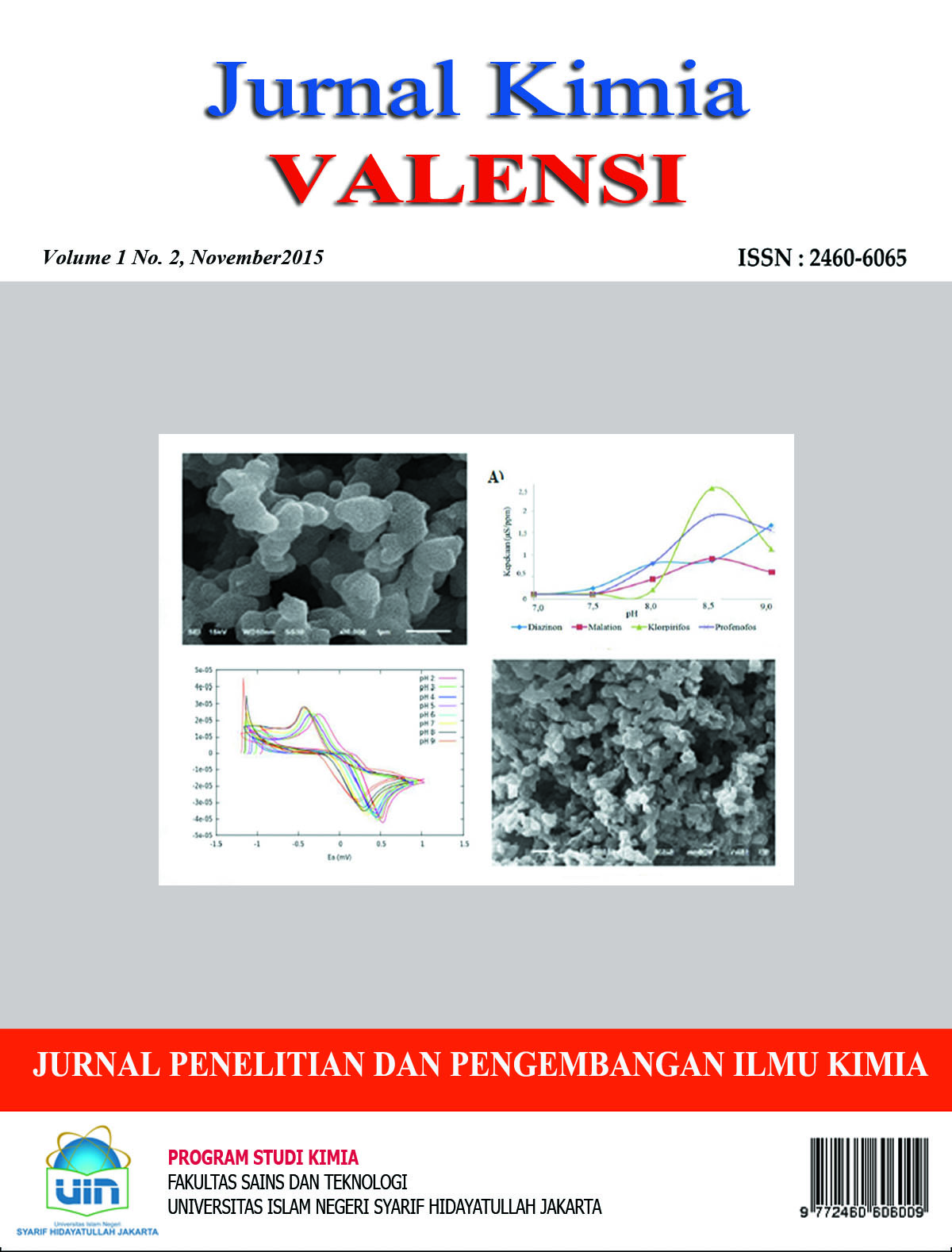Sintesis dan Karakterisasi Polianilina Doping Asam Klorida dengan Metode Interfasial
DOI:
https://doi.org/10.15408/jkv.v0i0.3143Keywords:
Polyaniline, interfacial polymerization, nanofiber.Abstract
The growing interest in nanostructured conducting polymers is caused by expanding area of their practical application. Conducting polymers can be used in new electronic devices (transistors, displays, sensors, energy storage and memory cells), materials for shielding electromagnetic irradiation, inhibition of corrosion, membrane constructing, catalysis and medicine. The studies of polyaniline (PANI) and other conducting polymers have shown that they possess semiconducting properties. Due to its high stability and unique complex of properties, PANI was the first among conducting polymers to be used in practice as an electrode material for batteries, as a corrosion inhibitor and detecting material for sensors. PANI without dopant material possesses controlled conductivity 10-10 S∙cm-1. PANI was synthesized by the interfacial method by oxidation of aniline with ammonium peroxydisulfate (APS) as an oxidant in an immiscible organic/aqueous biphasic system, with hydrochloric acid as dopant. An organic phase contained aniline dissolved in toluene, while the oxidant was dissolved in acid. The produced PANIs have conductivities in the range 0.03-0.07 S.cm−1. Their nanofiber morphology was confirmed by scanning electron microscopy (SEM). Molecular structure of synthesized PANIs was investigated by FTIR Spectroscopy.
DOI :http://dx.doi.org/10.15408/jkv.v0i0.3143
Downloads
References
Detsri E, Dubas T. 2009. Interfacial polymerization of water-soluble polyanilinae and its assembly using the layer-by-layer technique.Journal of Metals, Materials and Minerals. 19(1): 39-44.
Eftekhari A. 2010.Nanostructured Conductive Polymers. New York (USA):Wiley.
Rakić AA, Trifunović S, Ćirić-Marjanovic G. 2014. Dopant-free interfacial oxidative polymerization of aniline.Synthetic Metals. 192: 56-65.
Skotheim TA, Reynolds JR. 2007.Conjugated Polymers Theory, Synthesis, Properties, and Characterization.Third Edition.New York (USA): CRC Press.
Wallace GG, Spinks GM, Kane-Meguire LAP, Teasdale PR. 2009.Intelligent Polymer System: Conductive Electroactive Polymers.Third Edition. London (UK): CRC Press.
Wan M. 2008. Conducting Polymers with Micro or Nanometer Structure. New York (USA): Springer.





